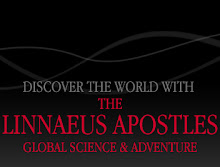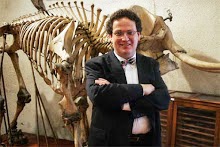Dear Caroli,
I have long struggled to comprehend why taxonomy is so misunderstood, particularly by non-taxonomic biologists. At least part of the confusion is that taxonomy is many things to many people. To a field biologist who simply wants to identify a plant or animal at a study site, the whole of his exposure to taxonomy may progress no farther than a diagnostic key and a bewildering list of synonyms. To him, synonyms are a nuisance inasmuch as he just wants to know what name to use. And once identified and known by name, he may not see further need of taxonomy. It is to this almost trivial aspect of taxonomy that things like DNA barcoding is directed. It assumes that species are just arbitrary bits of a genetic continuum carved out and named for convenience and to avoid biodiversity chaos. Were this true, DNA barcoding would be as good an option as any. Fortunately, it is not.
To the comparative biologist, taxonomy is the source of hypotheses about phylogenetic relationship and an incredibly useful vocabulary by which to indicate which monophyletic clade is being discussed. This phylogenetic systematic division of taxonomy begins to get at the depth, complexity, and intellectual richness of taxonomy.
A growing user community are the biomimicry pioneers who would use evolutionary adaptations as a source of entrepreneurship and problem-solving. To this community, taxonomy is not merely an identification and a name. The phylogenetic classification is the key to predicting where to look to find an attribute of an organism of interest. Moreover, it is in the detailed description of species --- the attention to anatomical detail --- that many of the most important adapations are to be found. This community appreciates that there is deep value in descriptions that can never be approached by molecular data alone, even if barcodes are aligned with libraries of known species (something both claimed and demonstrably violated by some of its luminaries who say that barcodes are identification and not species discovery tools at the same time that they promote them as species discovery tools). Integrity, it would seem, takes a back seat to profits.
And finally, there is the taxonomy of taxonomists. To the taxonomist his science is the ultimate expression of evolutionary biology. In the course of his revision or monograph, he combines the adventure of boots-on-the-ground exploration, the scholarship involved in studying all descriptions and type specimens since 1758, the exciting discovery associated with deep thought about and interpretation of homology, and the intellectual satisfaction of understanding the origin and entire evolutionary history of not only a monophyletic group of species but also of the transmutation of numerous suites of characters. This intellectual exercise knows none of the normal bounds of space or time, taking as a limitation only the boundaries of synapomorphy and energetic search for characters.
Those who trivialize taxonomy as an identification service have failed to grasp the significance of those identifications and names. They are reliable only because they reflect rigorous theories about characters, species, and clades and that is no trivial scientific accomplishment.
Your Apostle,
Quentin
Monday, September 5, 2011
Saturday, August 27, 2011
The Oldest Profession
 Dear Carl,
Dear Carl,
I once wrote in a book review that taxonomy is the oldest profession practiced with our clothes on which is, I believe, truthful. It occurred to me that, thanks to your keen fashion sense, it is also one of few professions ever practiced in Lapland threads. Thanks for being a trendsetter.
Your Apostle,
Quentin
Sunday, August 21, 2011
The humble science

Dear Carl,
In February, 1676, Sir Isaac Newton wrote to Robert Hooke that "If I have seen further it is only by standing on the shoulders of giants." Thanks to your system of names, as now codified in the International Code of Zoological Nomenclature, this kind of humility is imposed upon every taxon expert.
In order to master a single genus, a taxonomist must read and understand every theory of a species proposed since your own masterpiece in 1758, including each theory of homology contained in each description, grasp their implications for variations and character distributions, and then assess those predictions by comparing tens of thousands of accumulated specimens. No other field of biology has such deep scholarship as a standard mode of practice.
Naming a species in your system is one of very few sure paths to immortality. While a paper published in other biological disciplines is effectively ignored after a few years, taxonomic papers will remain mandatory reading for students of taxa who will not be born for centuries to come. The upside of course is the exhilaration of knowing that your good work will exist in perpetuity. The downside is that your mistakes will last just as long. Taxonomists alone bear the burden of signing their work, since author names follow the genus and specific epithet in your binomial system and will forever be there for adoration or cursing.
Apostolically yours,
Quentin
Tuesday, August 16, 2011
Conspiracy Theory
Forgive them, Carl, they know not what they do
I continue to wrestle with what to me is the inconceivable proposition that professional biologists would not see the importance of taxonomy. I have previously published the view that the neglect of taxonomy traces its roots to the rise of experimentalism in France and that this prejudice blossomed to full bloom about 1940 when Mayr and other Neo-Darwinists basically said that descriptive taxonomy is non-science and only population-level work ("population thinking" was the phrase, amazingly paralleled by contemporary misguided "tree thinkers" who misapply Hennig's methods below the species level) deserves respect as science. I still contend that this uncharitable read of history is right in broad strokes. Another pivotal issue involves our notions of what a species is.
To many population geneticists, ecologists, and molecular biologists, species are viewed as arbitrary bits of more or less continuous genetic variation that are set apart by subjective, blurry, or ephemeral gaps in variation. Such a view was an over reaction to Darwin's explanation of the importance and ubiquity of genetic variation and a frequent failure by non-taxonomists to distinguish between what Kevin Nixon and I called "traits" versus "characters". Traits are those attributes that vary within species; characters are those that are fixed and shared by 100% of members of a species. Process oriented biologists often point to a trait and proclaim "See! Species are variable" and therefore arbitrary. That bit of sophistry, however, does not undermine the objective status of good species or of good characters. The hallmark of taxonomy done well has always been the differentiation of those characters relevant to a particular level in the hierarchy whether species or some level of monophyly from those that vary and are therefore informative at some less inclusive level at best. It is intellectually dishonest to confound constant characters and variable traits and then denounce the objective existence of species. Pronouncements of species based on poorly selected or analyzed data is an indictment on bad taxonomy not the reality of species. This whole mess is tangled up too with a parallel confusion of what is or is not a character. Characters to a taxonomist are steeped in theory and hypotheses. The character backbone is constantly distributed among all vertebrate species, yet backbones do not look alike; cf. the backbone of a mouse and a giraffe, for example. The length or number of vertebrae may be informative at other levels, but at the level of Vertebrata the character "backbone" is a theoretical abstraction for which there are many instantiations. For a superb explanation of the theoretical underpinnings of characters in taxonomy, see Norm Platnick's seminal 1979 "transformation" paper in Systematic Zoology.
Reversing the bias against taxonomy so that we can get on with species exploration to prepare science and society to meet the biodiversity crisis may not be possible until we confront theoretical issues related to characters and species. If I were convinced that species were arbitrary, I would have little respect for taxonomy either. We must debunk this myth that is based on both malicious confusion --- I am convinced that Mayr who had done taxonomy deliberately chose traits or characters for a particular argument, pretending not to understand the distinction --- and a couple generations of students being indoctrinated into this false view that species are not real and taxonomy, thereby, not science.
Asking experimental biologists to unlearn what they have been taught about characters, species, and taxonomy will be far more difficult than it would have been to educate them about such issues to begin with. As Mark Twain said, "It ain't what you don't know that gets you into trouble. It's what you know for sure that just ain't so.”
To many population geneticists, ecologists, and molecular biologists, species are viewed as arbitrary bits of more or less continuous genetic variation that are set apart by subjective, blurry, or ephemeral gaps in variation. Such a view was an over reaction to Darwin's explanation of the importance and ubiquity of genetic variation and a frequent failure by non-taxonomists to distinguish between what Kevin Nixon and I called "traits" versus "characters". Traits are those attributes that vary within species; characters are those that are fixed and shared by 100% of members of a species. Process oriented biologists often point to a trait and proclaim "See! Species are variable" and therefore arbitrary. That bit of sophistry, however, does not undermine the objective status of good species or of good characters. The hallmark of taxonomy done well has always been the differentiation of those characters relevant to a particular level in the hierarchy whether species or some level of monophyly from those that vary and are therefore informative at some less inclusive level at best. It is intellectually dishonest to confound constant characters and variable traits and then denounce the objective existence of species. Pronouncements of species based on poorly selected or analyzed data is an indictment on bad taxonomy not the reality of species. This whole mess is tangled up too with a parallel confusion of what is or is not a character. Characters to a taxonomist are steeped in theory and hypotheses. The character backbone is constantly distributed among all vertebrate species, yet backbones do not look alike; cf. the backbone of a mouse and a giraffe, for example. The length or number of vertebrae may be informative at other levels, but at the level of Vertebrata the character "backbone" is a theoretical abstraction for which there are many instantiations. For a superb explanation of the theoretical underpinnings of characters in taxonomy, see Norm Platnick's seminal 1979 "transformation" paper in Systematic Zoology.
Reversing the bias against taxonomy so that we can get on with species exploration to prepare science and society to meet the biodiversity crisis may not be possible until we confront theoretical issues related to characters and species. If I were convinced that species were arbitrary, I would have little respect for taxonomy either. We must debunk this myth that is based on both malicious confusion --- I am convinced that Mayr who had done taxonomy deliberately chose traits or characters for a particular argument, pretending not to understand the distinction --- and a couple generations of students being indoctrinated into this false view that species are not real and taxonomy, thereby, not science.
Asking experimental biologists to unlearn what they have been taught about characters, species, and taxonomy will be far more difficult than it would have been to educate them about such issues to begin with. As Mark Twain said, "It ain't what you don't know that gets you into trouble. It's what you know for sure that just ain't so.”
Thursday, August 11, 2011
Dear L.
Dear L.,
My dear mentor Carl von Linne, you will be pleased to know that your work has so impacted the modern world's understanding of biological diversity that species which you personally named are followed simply by the letter "L." universally recognizable as Linnaeus to every taxonomist and taxonomically literate student of Nature.
You will no doubt want to become a follower of this Blog so that you can blush in self congratulatory smugness as we, your 21st century disciples, lavish praise upon you and your work that has survived the centuries well.
In the correspondences that follow, you will learn about the history, current state, and future of taxonomy and Linnaean nomenclature from those who are faithfully carrying on your work. You continue to inspire and lead serious students of species exploration. I write to alert you to this blog and to personally thank you for the intellectual wonder and joy you have brought to my life.
Your humble disciple,
Quentin
My dear mentor Carl von Linne, you will be pleased to know that your work has so impacted the modern world's understanding of biological diversity that species which you personally named are followed simply by the letter "L." universally recognizable as Linnaeus to every taxonomist and taxonomically literate student of Nature.
You will no doubt want to become a follower of this Blog so that you can blush in self congratulatory smugness as we, your 21st century disciples, lavish praise upon you and your work that has survived the centuries well.
In the correspondences that follow, you will learn about the history, current state, and future of taxonomy and Linnaean nomenclature from those who are faithfully carrying on your work. You continue to inspire and lead serious students of species exploration. I write to alert you to this blog and to personally thank you for the intellectual wonder and joy you have brought to my life.
Your humble disciple,
Quentin
Subscribe to:
Posts (Atom)












